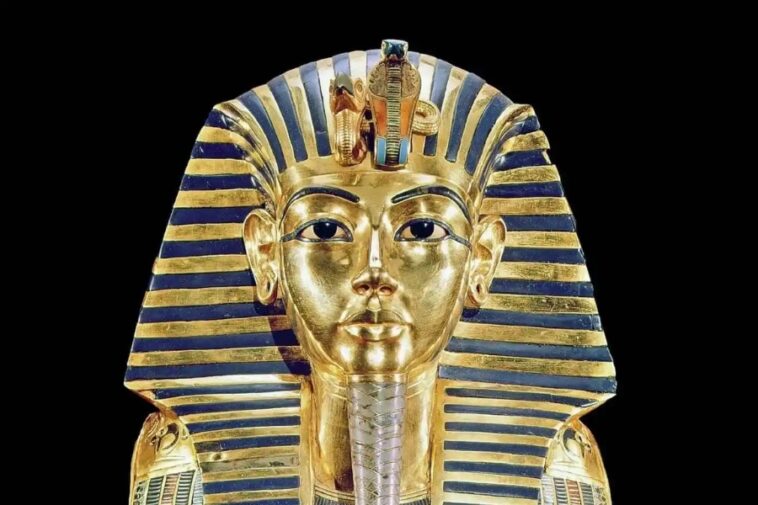A groundbreaking study from the University of York challenges long-held beliefs about King Tutankhamun’s famous death mask. Researchers suggest it may not have been created for the young pharaoh.
Instead, they believe the mask was originally crafted for a high-status female—possibly his stepmother, Queen Nefertiti. This new hypothesis stems from recent re-examinations of historical records and a detailed analysis of the mask’s materials.
Professor Joann Fletcher, a lead researcher on the project, explained, “This mask was not made for an adult male pharaoh; when the gold was compared, [they found] the face is made of completely different gold to the rest.” Her comment highlights the team’s conclusion that the mask’s features suggest a different intended wearer.
If the theory holds, this would rewrite a critical part of ancient Egyptian history, raising questions about the true origins of one of the world’s most recognizable artefacts.
Mask’s Pierced Ears and Unique Gold Composition Offer Clues
The team’s re-evaluation centred around unique features on the mask, including its pierced ears—an uncommon trait for masks made for male pharaohs.
Researchers discovered that the ears on the mask are pierced, a detail typically reserved for masks of women and children in ancient Egypt. While earrings were common for pharaohs, their death masks rarely featured piercings.
The team also analysed the mask’s gold composition. According to Professor Fletcher, the face is crafted from a different type of gold than the rest of the mask. This suggests that the mask’s face section might have been modified to fit King Tut’s likeness after his unexpected death.
These differences, combined with historical records from the 1922 excavation, add credibility to the theory that the mask was altered for the young king.
Reigniting a Theory of Queen Nefertiti’s Legacy
The idea that Tutankhamun’s death mask may have been originally intended for Queen Nefertiti is not entirely new. Egyptologist Nicholas Reeves suggested a similar theory in 2015, proposing that the mask may have been made for Nefertiti, whose final resting place remains a mystery.
Nefertiti, known for her marriage to King Tutankhamun’s father Akhenaten, held significant influence during her lifetime. Her legacy remains clouded due to the absence of her tomb.
This new theory suggests that Tutankhamun’s sudden death may have led artisans to repurpose her death mask by grafting his face onto it, ensuring the young pharaoh was ready for the afterlife.
As experts debate these revelations, the death mask of King Tutankhamun may gain new significance—not just as a symbol of the pharaoh but as a piece of the enigmatic Queen Nefertiti’s legacy.




GIPHY App Key not set. Please check settings